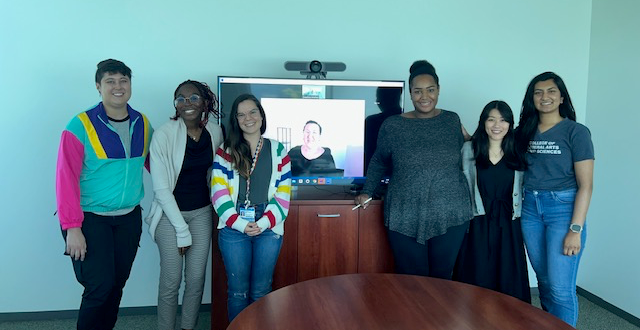Translational Science Benefits
Summary
Suicide is the second leading cause of death among 10- to 25-year-olds.1 Suicidal behaviors are three to four times more likely among youths in the juvenile legal system2–5 than among their peers outside the system. Fifty percent of youths in juvenile detention experience suicidal ideation.6 Because of social and structural factors, including racism,7 Black youths are disproportionately represented in detention.8 Thus, placement in detention is an event that puts youths at high risk for suicidal behavior and that disproportionately affects Black youths. The Zero Suicide model is the national strategy for suicide prevention in healthcare.9,10 The core clinical elements include IDENTIFY (i.e., evidence-based suicide screening and risk assessment), ENGAGE (i.e., appropriate pathways of care), TREAT (i.e., evidence-based suicide intervention), and TRANSITION (i.e., care coordination). We seek to develop a Zero Suicide model for juvenile detention to support youth at-risk for suicide and to ensure that existing disparities in mental health care for Black youths are not worsened.11

This is an ongoing research program that began in March 2018. We have completed three projects with a fourth underway, all concerned with identifying and preventing suicidality among youths in juvenile detention. In the first project, we used quality improvement methods to develop a feasible, acceptable, and appropriate suicide prevention plan for a single, large juvenile detention center.12 In this plan, behavioral health clinicians inside the juvenile detention center screen all youth for mental health needs, including suicidality. The clinicians then provide appropriate health services; one example is the Stanley and Brown Safety Planning Intervention,13 which is a brief suicide prevention intervention that supports coping in times of crises.
The second project studied statewide efforts to prevent suicide in juvenile detention, with the primary goal to learn more about the quality of suicide prevention.14 Within this study we also sought to identify barriers and facilitators to suicide prevention implementation. To get this information, we interviewed 80% of detention center leaders and staff in one state. We learned that suicide prevention practice adoption is high, but the quality of implementation in line with national guidelines is low. A primary concern with respect to suicide prevention implementation barriers was the lack of behavioral health support available in juvenile detention centers.15 Only half of juvenile detention centers had any amount of behavioral health support.
In project 3 we sought to understand suicide prevention barriers and facilitators with input from centers with varying levels of support from behavioral health clinicians.16 We learned that leadership support of suicide prevention is key in supporting implementation efforts across centers. The findings also suggest that training frontline supervisors to better support frontline staff in the delivery of suicide prevention may improve intervention sustainability for centers without behavioral health clinicians.16
We are now conducting project 4. Project 4 is a 5-year National Institute of Mental Health (NIMH) career development award that aims to use community-based participatory methods to develop a Zero Suicide prevention model for juvenile detention (K23MH129321). In this project, we will work with young Black youth connected to the juvenile-legal system to understand their preferences for suicide prevention, develop a model for suicide prevention that incorporates the lessons learned from all four projects, and then pilot the model in two detention centers. The final output of the current project is a manualized Zero Suicide model that is primed for implementation and sustainment in juvenile detention centers.
Significance
Through the development of our Zero Suicide model, we hope to increase the adoption and implementation of evidence-based suicide prevention in juvenile detention centers. As that occurs, we expect that 1) fewer suicidal youth will be detained because center staff will better understand the harms associated with detaining those youth and seek alternative placement and 2) fewer youth will experience suicidality when detained.
Our work is informed by community-based participatory research designs. As such, in each project, we have aimed to center the needs of Black youth who are, due to structural racism, overrepresented in juvenile detention. We have sought to include community voices throughout our research program. By developing a model that centers the needs of Black youth specifically, we are explicitly focusing on equity.
Benefits
Demonstrated benefits are those that have been observed and are verifiable.
Potential benefits are those logically expected with moderate to high confidence.
We aim to develop culturally appropriate suicide prevention practices. potential.
Clinical
The Zero Suicide model will be a service for individuals in juvenile detention. potential.
Community
The Zero Suicide model aims to reduce youth suicidality. potential.
Community
The Zero Suicide model aims to connect youth to mental health care delivery for those who need help. potential.
Community
The Zero Suicide model aims to increase the quality of suicide prevention practices in juvenile detention. potential.
Community
By reducing youth suicidality, we hope to improve life expectancy. potential.
Community
The Zero Suicide model will take a public health approach to mental health, making considerations for universal, indicated, and intensive mental health services. potential.
Community
By reducing suicidality among youth, we hope to increase the life expectancy of youth, which will benefit society financially by having these young people in our economy longer. potential.
Economic
We have published several papers that guide suicide prevention in juvenile detention. demonstrated.
Policy
We hope that our Zero Suicide model will become the new standard for suicide prevention in juvenile detention and will be adopted by county and state agencies that oversee juvenile detention facilities. potential.
Policy
This research has clinical, community, economic, and policy implications. The framework for these implications was derived from the Translational Science Benefits Model created by the Institute of Clinical & Translational Sciences at Washington University in St. Louis.
Clinical
We hope to adapt existing suicide prevention programs to ensure they meet the needs of Black youth, thereby improving the effectiveness of those interventions and ultimately saving lives.
Community
The ultimate goal of our work is to minimize the number of youth who have mental health concerns from entering juvenile detention, and to prevent mental health concerns from developing among those who do. Our Zero Suicide model will support juvenile detention centers in do just that.
Economic
All youth deserve an opportunity to see adulthood. We hope that our program will increase the life expectancies of youth in juvenile-legal systems, ultimately making this world a better place for all.
Policy
While there are standards for suicide prevention for juvenile detention, we want them to be enhanced. We hope this work will help with this.
- Heron M. Deaths: Leading Causes for 2016.
- Abram KM, Choe JY, Washburn JJ, Teplin LA, King DC, Dulcan MK. Suicidal Ideation and Behaviors Among Youth in Juvenile Detention. J Am Acad Child Adolesc Psychiatry. 2008;47(3):291-300.
- Livanou M, Furtado V, Winsper C, Silvester A, Singh SP. Prevalence of Mental Disorders and Symptoms Among Incarcerated Youth: A Meta-Analysis of 30 Studies. Int J Forensic Ment Health. 2019;18(4):400-414.
- Hayes LM. Juvenile Suicide in Confinement—Findings from the First National Survey. Suicide Life Threat Behav. 2009;39(4):353-363.
- Wasserman GA, McReynolds LS. Suicide Risk at Juvenile Justice Intake. Suicide Life Threat Behav. 2006;36(2):239-249.
- Esposito CL, Clum GA. Social support and problem-solving as moderators of the relationship between childhood abuse and suicidality: Applications to a delinquent population. J Trauma Stress. 2002;15(2):137-146.
- Rovner J. Racial Disparities in Youth Commitments and Arrests. The Sentencing Project. Published April 1, 2016. Accessed May 29, 2024. https://www.sentencingproject.org/reports/racial-disparities-in-youth-commitments-and-arrests/
- State detention rates by race/ethnicity, 2019 | Office of Juvenile Justice and Delinquency Prevention. Accessed May 29, 2024.
- Office of the Surgeon General (US), National Action Alliance for Suicide Prevention (US). 2012 National Strategy for Suicide Prevention: Goals and Objectives for Action: A Report of the U.S. Surgeon General and of the National Action Alliance for Suicide Prevention. US Department of Health & Human Services (US); 2012. Accessed May 29, 2024. http://www.ncbi.nlm.nih.gov/books/NBK109917/
- Richards JE, Simon GE, Boggs JM, et al. An implementation evaluation of “Zero Suicide” using normalization process theory to support high-quality care for patients at risk of suicide. Implement Res Pract. 2021;2:26334895211011769. doi:10.1177/26334895211011769
- Alegria M, Vallas M, Pumariega A. Racial and Ethnic Disparities in Pediatric Mental Health. Child Adolesc Psychiatr Clin N Am. 2010;19(4):759-774.
- Rudd BN, George JM, Snyder S, et al. Harnessing Quality Improvement and Implementation Science to Support the Implementation of Suicide Prevention Practices in Juvenile Detention. Psychotherapy. 2022;59(2):150-156.
- Home. Stanley-Brown Safety Planning Intervention. Accessed May 29, 2024. https://suicidesafetyplan.com/
- Rudd BN, Witzig J, Goff CN, et al. A Statewide Evaluation of the Implementation of Evidence-Based Suicide Prevention Guidelines in Juvenile Detention Centers. Psychiatr Serv Wash DC. Published online February 19, 2024:appips20220490.
- Rudd BN. Protecting the most vulnerable: Suicide prevention in the justice system. Symposium presented at: 55th annual meeting of the Association for Behavioral and Cognitive Therapies; November 2021; Virtual.
- Rudd BN, Stern DH, Potter EN, Goff CN. The zero suicide model for juvenile detention: Leadership, training, and staff attitudes matter. Presented at: November 18, 2021.
- Luke DA, Sarli CC, Suiter AM, et al. The Translational Science Benefits Model: A New Framework for Assessing the Health and Societal Benefits of Clinical and Translational Sciences. Clin Transl Sci. 2018;11(1):77-84.

